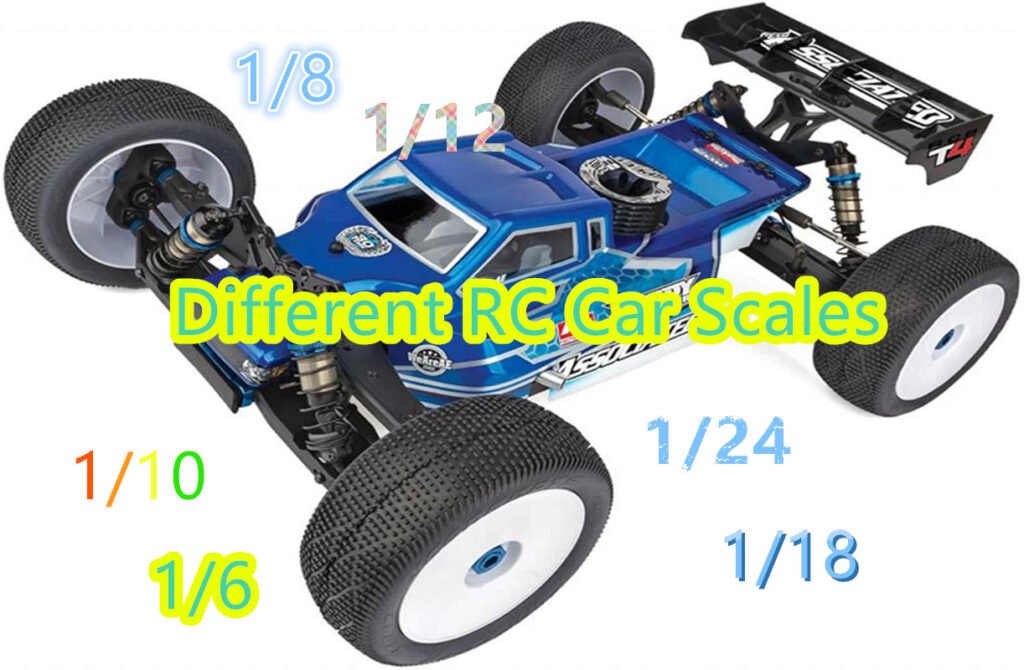Decoding Different RC Car Scales: Your Guide to Size, Performance, and the Perfect Fit

Remote control (RC) cars and trucks captivate hobbyists with their blend of engineering and adrenaline. But scaling confusion—like what “1/10 scale” really means or which size suits a beginner—can overwhelm newcomers. Understanding RC car scales is essential for matching your vehicle to your terrain, budget, and skill level. Let’s demystify the numbers and unlock smarter buying decisions.
What Are RC Car Scales? The Definition and Purpose
The scale of an RC model is its size ratio compared to the full-size vehicle it replicates. For example, a 1/10 scale RC car is one-tenth the length, width, and height of the actual car. This proportional downsizing extends to details like tire size and suspension geometry, ensuring realistic handling and aesthetics. Scales range from massive 1/5 models (up to 40 inches long) to palm-sized 1/64 miniatures. The lower the denominator (e.g., 1/5 vs. 1/24), the larger the model.
Identifying a model’s scale is straightforward:
- Check the product manual, packaging, or chassis markings (e.g., “1/10” printed near the serial number).
- Measure the body and compare it to the real vehicle’s dimensions. A 16-foot Jeep’s 1/10 replica should be ~19.2 inches long.
RC Car Scales Comparison Chart: Dimensions, Weight, and Performance
Scale isn’t just about size—it dictates speed, terrain capability, and durability.
Here’s a breakdown of popular scales:
| Scale | Avg. Length | Avg. Weight | Top Speed | Best Terrain | Key Examples |
|---|---|---|---|---|---|
| 1/5 | 30–40″ (76–102 cm) | 60–80 lbs (27–36 kg) | 50+ mph | Off-road, large open spaces | Traxxas Xmaxx |
| 1/8 | 18–23″ (46–58 cm) | 5–20 lbs (2–9 kg) | 45+ mph | Off-road tracks, jumps | HB Racing buggy |
| 1/10 | 17–22″ (43–56 cm) | 3–11 lbs (1–5 kg) | 30–40 mph | Mixed (on/off-road), trails | Traxxas Slash, Tamiya TT-02 |
| 1/16 | 10–14″ (25–36 cm) | 2–4 lbs (1–2 kg) | 20–30 mph | Backyards, indoor/outdoor | RCG Rock Crawler |
| 1/24 | 7–9″ (18–23 cm) | 1–2 lbs (0.5–1 kg) | 15–25 mph | Indoor, smooth surfaces | Axial AX24 crawler |
RC Car Scales Comparison Chart
- Larger scales (1/5, 1/8): Dominate in power and stability but demand wide driving spaces and higher budgets. A 1/5 monster truck like the Traxxas Xmaxx crushes rough terrain but costs 3x a 1/10 model.
- Mid-size scales (1/10, 1/16): Strike the best balance of detail and versatility. The 1/10 Traxxas Slash handles dirt tracks and pavement equally well.
- Small scales (1/24–1/64): Excel in portability and affordability but lack off-road prowess. The 1/24 Axial AX24 crawler fits on a desk but struggles on grass.
Tip: Within the same scale, vehicle type affects size. A 1/10 Traxxas Slash truck (22″) is longer than a 1/10 buggy (17″) due to body design.
How Big Is a 1/10 Scale RC Car? Breaking Down the Standard
The 1/10 scale is the industry benchmark, making up ~60% of hobby-grade sales. Its dimensions are:
- Length: 17.5–22″ (44–56 cm)
- Width: 7.8–14.4″ (20–37 cm)
- Height: 4.2–9.1″ (11–23 cm)
For context:
- A 1/10 Ford F-150 replica measures ~20″ long—roughly the size of a house cat.
- It’s small enough to run in driveways or parks but large enough to accommodate brushless motors, 4WD systems, and adjustable suspensions for competitive racing.

Choosing the Right Scale for Beginners: 1/10 and 1/16 Lead the Pack
For new hobbyists, ease of control, durability, and cost are critical. The 1/10 and 1/16 scales reign supreme here:
1/10 Scale:
- Pros: Stable handling, abundant replacement parts, versatile for lawns or parking lots. Models like the Traxxas Rustler 2WD include waterproof electronics and RTR (Ready-to-Run) kits with batteries included.
- Cons: Requires moderate space; entry-level models start at $200.
1/16 Scale:
- Pros: Compact size (fits in a backpack), lower price (<$150), ideal for indoor garages or small backyards. The RCG Racing 1/16 MT One Tracer offers surprising off-road grit for its size.
- Cons: Less detailed than 1/10; limited high-speed potential.
Avoid 1/5 or 1/24 scales as a beginner: Large scales are costly and complex; tiny scales are fragile and hard to control.
RC scales aren’t arbitrary—they’re blueprints for your hobby experience. Prioritize 1/10 models if you crave realism and growth potential, or 1/16 rigs for low-stress experimentation.
Remember:
- For speed demons: 1/8 buggies (e.g., Team Associated RC8) dominate tracks.
- Crawling enthusiasts: 1/10 or 1/24 scales (e.g., Axial Capra) excel on rocks.
- Budget shoppers: Start with 1/16 RTR kits to avoid hidden costs.
Scale is your first decision—but not your last. Once you’ve chosen size, dive into motor types (brushed vs. brushless), terrain tires, and battery tech to maximize fun.
As RC experts at HobbyTown advise: “A well-matched scale turns frustration into fascination”.